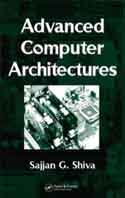
|
Advanced Computer Architectures (9780849337581) (Reprint 2012) - Sajjan G. Shiva |
|
|
Cover Price : Rs 695.00
|
Imprint : T & F / Routledge
ISBN : 9780849337585
YOP : 2012
|
Binding : Paperback
Total Pages : 352
CD : No
|
|
About the Book:-
Despite the tremendous advances in performance enabled by modern architectures, there are always new applications and demands arising that require ever-increasing capabilities. Keeping up with these demands requires a deep-seated understanding of contemporary architectures in concert with a fundamental understanding of basic principles that allows one to anticipate what will be possible over the system's lifetime. Advanced Computer Architectures focuses on the design of high performance supercomputers with balanced coverage of the hardware, software structures, and application characteristics.
This book is a timeless distillation of underlying principles punctuated by real-world implementations in popular current and past commercially available systems. It briefly reviews the basics of uniprocessor architecture before outlining the most popular processing paradigms, performance evaluation, and cost factor considerations. This builds to a discussion of pipeline design and vector processors, data parallel architectures, and multiprocessor systems. Rounding out the book, the final chapter explores some important current and emerging trends such as Dataflow, Grid, biology-inspired, and optical computing. More than 220 figures, tables, and equations illustrate the concepts presented.
Based on the author's more than thirty years of teaching and research, Advanced Computer Architectures endows you with the tools necessary to reach the limits of existing technology, and ultimately, to break them.
Contents:-
Preface. Introduction. Uniprocessor Architecture Overview. Models and Terminology. Pipelining. Vector Processors. Array Processors. Multiprocessor Systems. Current Directions. References. Index. |
|
 |
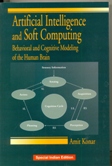
|
ARTIFICIAL INTELLIGENCE AND SOFT COMPUTING WITH CD , Reprint 2018 - AMIT KONAR |
|
|
Cover Price : £ 14.99
|
Imprint : T & F / Routledge
ISBN : 9781138582835
YOP : 2017
|
Binding : Paperback
Total Pages : 816
CD : Yes
|
|
About the Book :-
With all the material available in the field of artificial intelligence (AI) and soft computing-texts, monographs, and journal articles-there remains a serious gap in the literature. Until now, there has been no comprehensive resource accessible to a broad audience yet containing a depth and breadth of information that enables the reader to fully understand and readily apply AI and soft computing concepts.
Artificial Intelligence and Soft Computing fills this gap. It presents both the traditional and the modern aspects of AI and soft computing in a clear, insightful, and highly comprehensive style. It provides an in-depth analysis of mathematical models and algorithms and demonstrates their applications in real world problems.
Beginning with the behavioral perspective of "human cognition," the text covers the tools and techniques required for its intelligent realization on machines. The author addresses the classical aspects-search, symbolic logic, planning, and machine learning-in detail and includes the latest research in these areas. He introduces the modern aspects of soft computing from first principles and discusses them in a manner that enables a beginner to grasp the subject. He also covers a number of other leading aspects of AI research, including nonmonotonic and spatio-temporal reasoning, knowledge acquisition, and much more.
Artificial Intelligence and Soft Computing: Behavioral and Cognitive Modeling of the Human Brain is unique for its diverse content, clear presentation, and overall completeness. It provides a practical, detailed introduction that will prove valuable to computer science practitioners and students as well as to researchers migrating to the subject from other disciplines.
Contents :-
Introduction to AI and Soft Computing . The Psychological Perspective of Cognition. Production Systems. Problem Solving by Intelligent Search. The Logic of Propositions and Predicates. Principles in Logic Programming . Default and Non-Monotonic Reasoning. Structured Approach to Knowledge Representation . Dealing with Imprecision and Uncertainty. Structured Approach to Fuzzy Reasoning. Reasoning with Space and Time. Intelligent Planning. Machine Learning Techniques. Machine Learning using Neural Nets. Genetic Algorithms . Realizing Cognition using Fuzzy Neural Nets. Visual Perception. Linguistic Perception. Problem Solving by Constraint Satisfaction. Acquisition of Knowledge. Verification, Validation and Maintenance Issues. Parallel and Distributed Architecture for Intelligent Systems. Case Study I : Building a System for Criminal Investigation. Case Study II : Realization of Cognition for Mobile Robots. Appendices.
Each chapter contains exercises and references.
|
|
 |
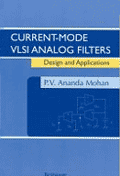
|
Current-Mode VLSI Analog Filters: Design and Applications, Reprint 2011 - P.V. Ananda Mohan |
|
|
Cover Price : Rs 695.00
|
Imprint : Birkhauser Verlag AG
ISBN : 8181282116
YOP : 2011
|
Binding : Paperback
Total Pages : 464
CD : No
|
|
DESCRIPTION
Current-mode design is of great interest to high-tech analog designers who are principally concerned with designing whole systems on a chip. This work focuses on the theory and methods of many important current-mode circuit design techniques making it a comprehensive technical overview that fills a gap in the current literature.
The purpose of the book is to compile all available information in the area of OTA-C filters, current conveyor and CFOA-based filters, switched-current filters, and log-domain filters into one complete reference volume. Practical applications of current-mode design techniques for realizing practical VLSI systems such as disk drive read-channel ICs and video filters are covered in detail. The necessary prerequisites for this book are a first course in active RC filters and digital signal processing; although not mandatory, some knowledge of switched-capacitor filters may be helpful.
FEATURES
* First exhaustive text covering various design techniques for realizing current-mode analog filters
* Presents several designs for OTAs and current conveyors in technologies such as bipolar, CMOS and BiCMOS
* Covers recent advances of switched-current filters
* Includes many practical applications of current-mode design techniques
* Suitable as a graduate-level textbook or self-study resource
Electrical engineers, computer engineers, and graduate students interested in analog VLSI design will find the book a thorough state-of-the-art treatment of the subject. Analog circuit designers will find the book an essential resource on the topic.
CONTENTS
Preface
Introduction
Operational Transconductance Amplifier-C filters
Current-mode Filter Design Using Current Conveyors
Switched-Current Filters
Log-domain and Square-root Domain Filters
Practical Design and Applications of Current-mode Systems
Bibliography
Index.
|
|
 |
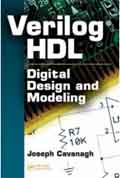
|
Verilog HDL : Digital Design and Modeling (Indian Reprint 2012) - Joseph Cavanagh |
|
|
Cover Price : Rs 3,495.00
|
Imprint : CRC Press
ISBN : 9781420051547
YOP : 2012
|
Binding : Hardbound
Total Pages : 920
CD : No
|
|
DESCRIPTION
Emphasizing the detailed design of various Verilog projects, Verilog HDL : Digital Design and Modeling offers students a firm foundation on the subject matter. The textbook presents the complete Verilog language by describing different modeling constructs supported by Verilog and by providing numerous design examples and problems in each chapter. Examples include counters of different moduli, half adders, full adders, a carry lookahead adder, array multipliers, different types of Moore and Mealy machines, and much more. The text also contains information on synchronous and asynchronous sequential machines, including pulse-mode asynchronous sequential machines.
In addition, it provides descriptions of the design module, the test bench module, the outputs obtained from the simulator, and the waveforms obtained from the simulator illustrating the complete functional operation of the design. Where applicable, a detailed review of the topic’s theory is presented together with logic design principles, including state diagrams, karnaugh maps, equations, and the logic diagram.
Verilog HDL : Digital Design and Modeling is a comprehensive, self-contained, and inclusive textbook that carriers all designs through to completion, preparing students to thoroughly understand this popular hardware description language (HDL).
CONTENTS
Introduction. Overview. Language Elements. Expressions. Gate-Level Modeling. User-Defined Primitives. Dataflow Modeling. Behavioral Modeling. Structural Modeling. Tasks and Functions. Additional Design Examples. Appendix A: Event Queue. Appendix B: Verilog Project Procedure. Appendix C: Answers to Selected Problems. Index.
FEATURES
• Outlines the complete design of a reduced instruction set computer (RISC) processor using verilog
• Provides a detailed outline of the theory and design of a carry lookahead adder
• Discusses both the Moore synchronous and asynchronous sequential machines as well as the Mealy pulse-mode asynchronous sequential machines
• Covers the theory and design of a binary-coded decimal (BCD) adder/subtractor and a Booth algorithm-based multiplier.
|
|
 |
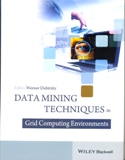
|
Data Mining Techniques in Grid Computing Environments , Indian Reprint - Werner Dubitzky |
|
|
Cover Price : Rs 3,995.00
|
Imprint : Wiley
ISBN : 9788126552054
YOP : 2014
|
Binding : Hardbound
Total Pages : 288
CD : No
|
|
Contents
Preface.
List of contributors.
1. Data mining meets grid computing: time to dance (Alberto Sánchez, Jesús Montes, Werner Dubitzky, Julio J. Valdés, María S. Pérez and Pedro de Miguel).
1.1 Introduction.
1.2 Data mining.
1.3 Grid computing.
1.4 Data mining grid - mining grid data.
1.5 Conclusions.
1.6 Summary of chapters in this volume.
2. Data analysis services in the Knowledge Grid (Eugenio Cesario, Antonio Congiusta, Domenico Talia and Paolo Trunfio).
2.1 Introduction.
2.2 Approach.
2.3 Knowledge Grid services.
2.4 Data analysis services.
2.5 Design of Knowledge Grid applications.
2.6 Conclusions.
3. GridMiner: an advanced support for e-science analytics (Peter Brezany, Ivan Janciak and A. Min Tjoa).
3.1 Introduction.
3.2 Rationale behind the design and development of GridMiner.
3.3 Use case.
3.4 Knowledge discovery process and its support by GridMiner.
3.5 Graphical user interface.
3.6 Future developments.
3.7 Conclusions.
4. ADaM services: scientific data mining in the service-oriented architecture paradigm (Rahul Ramachandran, Sara Graves, John Rushing, Ken Keiser, Manil Maskey, Hong Lin and Helen Conover).
4.1 Introduction.
4.2 ADaM system overview.
4.3 ADaM toolkit overview.
4.4 Mining in a service-oriented architecture.
4.5 Mining Web services.
4.6 Mining grid services.
4.7 Summary.
5. Mining for misconfigured machines in grid systems (Noam Palatin, Arie Leizarowitz, Assaf Schuster and Ran Wolff).
5.1 Introduction.
5.2 Preliminaries and related work.
5.3 Acquiring, pre-processing and storing data.
5.4 Data analysis.
5.5 The GMS.
5.6 Evaluation.
5.7 Conclusions and future work.
6. FAEHIM: Federated Analysis Environment for Heterogeneous Intelligent Mining (Ali Shaikh Ali and Omer F. Rana).
6.1 Introduction.
6.2 Requirements of a distributed knowledge discovery framework.
6.3 Workflow-based knowledge discovery.
6.4 Data mining toolkit.
6.5 Data mining service framework.
6.6 Distributed data mining services.
6.7 Data manipulation tools.
6.8 Availability.
6.9 Empirical experiments.
6.10 Conclusions.
7. Scalable and privacy preserving distributed data analysis over a service-oriented platform (William K. Cheung).
7.1 Introduction.
7.2 A service-oriented solution.
7.3 Background.
7.4 Model-based scalable, privacy preserving, distributed data analysis.
7.5 Modelling distributed data mining and workflow processes.
7.6 Lessons learned.
7.7 Further research directions.
7.8 Conclusions.
8. Building and using analytical workflows in Discovery Net (Moustafa Ghanem, Vasa Curcin, Patrick Wendel and Yike Guo).
8.1 Introduction.
8.2 Discovery Net system.
8.3 Architecture for Discovery Net.
8.4 Data management.
8.5 Example of a workflow study.
8.6 Future directions.
9. Building workflows that traverse the bioinformatics data landscape (Robert Stevens, Paul Fisher, Jun Zhao, Carole Goble and Andy Brass).
9.1 Introduction.
9.2 The bioinformatics data landscape.
9.3 The bioinformatics experiment landscape.
9.4 Taverna for bioinformatics experiments.
9.5 Building workflows in Taverna.
9.6 Workflow case study.
9.7 Discussion.
10. Specification of distributed data mining workflows with DataMiningGrid (Dennis Wegener and Michael May).
10.1 Introduction.
10.2 DataMiningGrid environment.
10.3 Operations for workflow construction.
10.4 Extensibility.
10.5 Case studies.
10.6 Discussion and related work.
10.7 Open issues.
10.8 Conclusions.
11. Anteater: service-oriented data mining (Renato A. Ferreira, Dorgival O. Guedes and Wagner Meira).
11.1 Introduction.
11.2 The architecture.
11.3 Runtime framework.
11.4 Parallel algorithms for data mining.
11.5 Visual metaphors.
11.6 Case studies.
11.7 Future developments.
11.8 Conclusions and future work.
12. DMGA: a generic brokering-based data mining grid architecture (Alberto Sánchez, María S. Pérez, Pierre Gueant, José M. Peña and Pilar Herrero).
12.1 Introduction.
12.2 DMGA overview.
12.3 Horizontal composition.
12.4 Vertical composition.
12.5 The need for brokering.
12.6 Brokering-based data mining grid architecture.
12.7 Use cases: Apriori, ID3 and J4.8 algorithms.
12.8 Related work.
12.9 Conclusions.
13. Grid-based data mining with the Environmental Scenario Search Engine (ESSE) (Mikhail Zhizhin, Alexey Poyda, Dmitry Mishin, Dmitry Medvedev, Eric Kihn and Vassily Lyutsarev).
13.1 Environmental data source: NCEP/NCAR reanalysis data set.
13.2 Fuzzy search engine.
13.3 Software architecture.
13.4 Applications.
13.5 Conclusions.
14. Data pre-processing using OGSA-DAI (Martin Swain and Neil P. Chue Hong).
14.1 Introduction.
14.2 Data pre-processing for grid-enabled data mining.
14.3 Using OGSA-DAI to support data mining applications.
14.4 Data pre-processing scenarios in data mining applications.
14.5 State of the art solutions for grid data management.
14.6 Discussion.
14.7 Open issues.
14.8 Conclusions.
Index.
|
|
 |
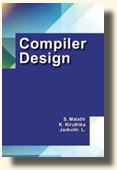
|
Compiler Design - S. Malathi, K. Kiruthika and Jackulin. C |
Author |
S. Malathi
K Kiruthika
C Jackulin
|
|
Cover Price : Rs 395.00
|
Imprint : Ane Books Pvt. Ltd.
ISBN : 9789385462597
YOP : 2015
|
Binding : Paperback
Size : 6.25" X 9.50"
Total Pages : 370
CD : No
|
|
About the Book
This book is a detailed introduction to compiler, focusing on more low-level and systems aspects rather than high-level questions. The goal of this book is to make the reader learn easily the concept of compiler. In particular, we should understand the structure of a compiler, and how the source and target languages control various choices in its design. It will give us a new impetus for programming language features and the implementation challenges they pose, as well as for the actual hardware architecture and the runtime system in which our generated code executes. This complier has been extensively used in compiling a variety of programming languages like C, C++, JAVA, C#.net, etc. The book is organized into 5 units.
Contents
1. Introduction to Compilers 2. Lexical Analyzer 3. Syntax Analyzer 4. Syntax-Directed Translation and Runtime Environment 5. Code Optimization and Code Generation, Index.
About the Authors :
Dr. S. Malathi, is the Professor and Dean, Dept. of PG/M.E, Panimalar Engineering College, Chennai, India., with more than 20 years of teaching experience She obtained her Doctorate from Sathyabama University, Chennai in the field of Software Engineering. She received her PG degree from the same university and UG from Coimbatore Institute of Technology, Coimbatore, India. She has published/presented several research papers in peer-reviewed International/National Journals and Conferences, respectively. She has guided number of projects and a few of them have received National Recognition. She is a reviewer in various National and International Journals. Her future interests lay in the field of System Engineering, Image Processing, Networks and Mobile Computing. She has received the award from CSI for "Best Ph.D Thesis Award and Best Paper Presenter Award in International Conferences".
Ms. K. Kiruthika received the B.Tech (IT) degree in Engineering and M.Tech (IT) with distinction in Engineering in 2011 from Sathyabama University, Chennai having an experience of 10 years. Currently working as an Assistant Professor/Computer Science and Engineering in Panimalar Engineering College Chennai. Her area of interest includes Data Base, Data Structure, and Operating system, Compiler Design and Computer Graphics.
Ms. Jackulin. C is a Member of ISTE from 2009 , Member Id number is LM-64803. She completed B.Tech Information Technology (2008) and M.E Computer Science and Engineering (2013) in Anna University Chennai, Tamilnadu , India. Currently working as an Assistant Professor, Computer Science and Engineering Department, Panimalar Engineering College, Chennai and having total experience of 6.5 years. Her research interests are in the area of Networks, Analysis ofAlgorithm, Data Structures, and Compiler Design.
|
|
 |
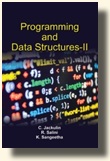
|
Programming and Data Structures-II by C. Jackulin, R. Salini and K. sangeetha |
Author |
C Jackulin
R Salini
K Sangeetha
|
|
Cover Price : Rs 495.00
|
Imprint : Ane Books Pvt. Ltd.
ISBN : 9789385462771
YOP : 2017
|
Binding : Paperback
Size : 6.25" X 9.50"
Total Pages : 434
CD : No
|
|
About the Book
The book explains various concepts in a simple step by step method. Each topic is illustrated with suitable examples and programs. After reading the book, the student can acquire the ability to express the ideas as well as the background for choosing an appropriate programming language and to understand the significance of the implementing the data structures. The book covers solved two marks and sixteen marks questions at the end of each unit which helps the students for preparing their semester examinations. The book also includes the previous year Anna university question papers for student’s reference.
Contents
1. Object Oriented Programming Fundamentals
2. Object Oriented Programming Concepts
3. C++ Programming Advanced Features
4. Advanced Non-Linear Data Structures
5. Graphs
About the Authors
Mrs.Jackulin.C is a Member of ISTE from 2009, Member Id number is LM-64803. She completed B.Tech Information Technology and M.E Computer Science and Engineering in Anna University Chennai, Tamilnadu, India. Currently working as an Assistant Professor, Computer Science and Engineering Department, Panimalar Engineering College, Chennai and having total experience of 6.5 years. Her research interests are in the area of Networks, Analysis of Algorithm, Data Structures, Data Bases and Compiler Design.
Mrs.R.Salini received M.C.A degree with distinction in S.S.M College of Engineering and M.Tech (IT) from Sathyabama University, Chennai having an experience of 4.0 years. Currently working as an Assistant Professor/Computer Science and Engineering in Panimalar Engineering College Chennai. Her area of interest includes Data Structure, Operating system, and Micro Processor.
Mrs.K..Sangeetha completed B.Tech Information Technology and M.E Computer and Communication Engineering in Anna University Chennai, Tamilnadu, India. Currently working as an Assistant Professor in Computer Science and Engineering Department at Panimalar Engineering College, Chennai and having total experience of 3 years. Her research interests are in the area of Network Security, Operating System, Data Structures, Object-oriented Concepts Software Engineering & Testing.
|
|
 |
|